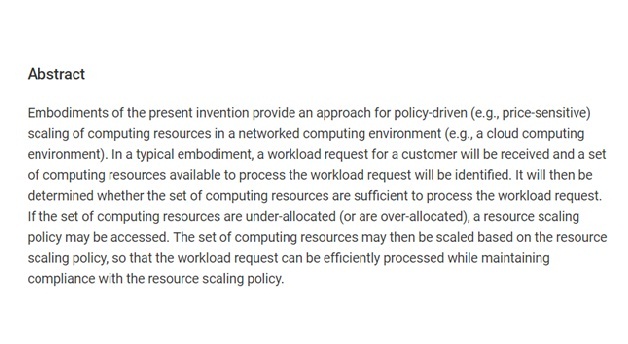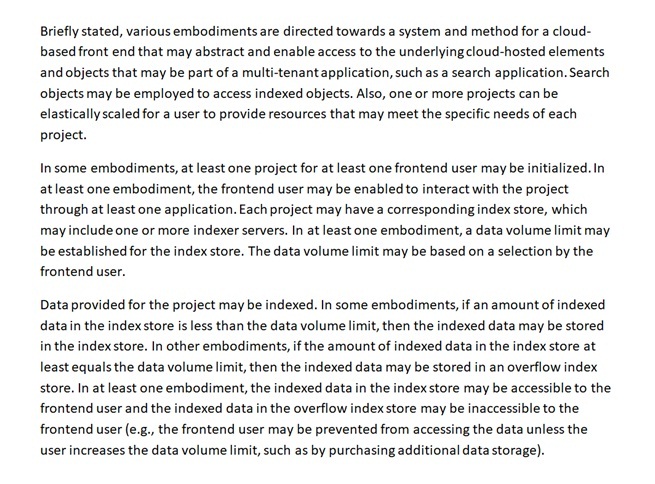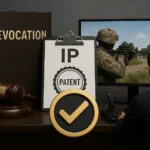The Basics of Patent Drafting
- Updated on: Jan 11, 2025
- Read 12 minutes
- Published on Jan 11, 2025
In this article, you will learn about the basics of patent writing (also called patent drafting), common mistakes patent writers do in patent preparation, and best practices for an effective and good-quality patent draft.
This article is about writing a non-provisional patent application. To understand about how to draft a provisional patent application, please click here: Provisional Patent Drafting.
What is a patent draft? What is patent drafting?
Patent drafting is the immediate next step the moment you think of how to patent an idea. Patent draft is a document you prepare when you decide about filing a patent for your invention. It is this patent draft that is submitted to a Patent Office for review an examination of the invention. If the invention is found to be patent eligible, the Examiner (examining authority) will grant it and converts into an enforceable patent within the specified jurisdiction.
What does a patent drafting process involve?
Drafting a patent application is not as easy as most people think. In fact, drafting a patent application is quite difficult and perhaps one of the most difficult tasks in a patent-related matter. One can write good quality patent applications only after years of patent experience. In many cases, it is not easy to write a good patent application even after years of experience. Many people are never able to write good quality patent drafts on their own even after decades of experience. Patent drafting is an art.
It is advisable to hire a good patent drafting company or a patent drafting expert for the technology domain your invention pertains to if you are not confident of writing a suitable patent draft on your own. It would be a wise decision to spend some money than to waste your invention altogether that you might have nurtured like a baby by filing a poor application that is likely to be rejected or likely to get a poor protection because of badly written patent claims.
You can contact us for cost effective patent drafting services.
Different sections of a patent draft
A patent draft typically includes the following different parts:
- Title
- Abstract
- Background
- Summary
- Brief Description
- Detailed Description (also called patent specification)
- Claims
- Drawings
How to write the title of a patent application?
The title of a patent application should be small and broadly description the invention. Very long titles are usually rejected by patent offices. However, please know that titles are not generally examined. Sometimes, a patent examiner may ask to change the title if the title is not descriptive enough. It is best to avoid being overly narrow in the invention’s title and being overly broad also. Never disclose your invention’s novelty in the Title even though the Title is generally not examined.
The title should sufficiently indicate the subject matter of your invention.
Some examples of a good title of a patent application are:
- Implantable medical system housing
- Sensor virtualization through cloud storage
- Drug eluting system for cardiac devices
- Circuit designing apparatus of an interactive type
Some examples of a poorly written title are:
- System for automatically checking boards bearing integrated circuits, wherein integrated circuits are used in medical devices
- Semiconductor device
- Data management
- A system and method for compressing related datasets of a sequence which compares domain blocks from a current frame buffer to range blocks in a previous frame buffer
How to prepare abstract of a patent application?
According to USPTO rules, it is mandatory that every non-provisional patent application include an Abstract. This Abstract is a concise summary of your invention disclosed in the patent application. You prepare this abstract when you are drafting the patent application for your invention. Abstract allows the Patent Office (and the public in general when it is published) to quickly know the nature of the disclosed subject matter in a patent application.
Although it is only a summary, it is important to write an abstract with care. Federal Courts may rely on an Abstract to construe the patent claims. This is the reason why some attorneys recommend to draft your application’s abstract as broadly as the broadest independent claim of the application.
Common mistakes in drafting an abstract of the patent application
These are some common mistakes drafters make, which should be avoided:
- The abstract is too long
- The abstract is too short
- The abstract is not provided on a separate sheet in the draft
- The language of the abstract is ambiguous and not clear or the abstract includes improper language
- The abstract does not describe the invention clearly
- It includes more than one paragraph
Example of a well written patent abstract:

Example of a poorly written patent abstract:

How to prepare background of a patent application?
The scope of a background section in a patent application is different in different patent regimes. In some patent systems, the background is used to disclose the most relevant prior art for the invention to allow examiners to understand the invention with respect to the prior art already known to the application or inventor. Of course, the examiner will still conduct his/her searchers during the examination. This is the situation in most European patent systems.
In the US, the prior art as submitted by the patent applicant is printed on the cover of the patent itself.
Sometimes, the background serves the purpose of setting the context in which the invention works.
Many patent drafting practitioners recommend to draft the shortest possible background sections because of the fear that they will inadvertently and unintentionally deprive their client of the full scope of patent protection by saying too much about the prior art. They think that the background content may be construed as prior art since it is reserved for prior art disclosure in many jurisdiction. If the applicant’s own invention gets converted even briefly in the background section, the patent examiner may cite this portion in the office action rejection.
Some patent offices and attorneys particularly take a hard approach around background sections. This is the reason why it is recommended to write a short background section. Even some attorneys go on to the extent of just writing a few sentences targeted to the prior art disclosure statements or simply their titles as a matter of care.
How to prepare summary of a patent application?
Not all jurisdictions require this section. But some jurisdictions keep summary section as a mandatory component. But customarily, many writers prepare summaries even if the jurisdiction does not strictly require it.
Most attorneys and patent writers give a lot of importance to patent summaries, even though the reality is that it is not an important section at all.
The summary of the invention section should ideally be the last part of the patent application that the patent writer writes. There is usually a temptation to draft the summary in the beginning as appears near the beginning of the application. But this should be avoided until the specification has significantly been written. Otherwise, many times, it is seen that the summary affects the way the specification evolves, which may majorly cause deviation from the original scope of the invention.
Often, major mistakes are committed in drafting patent invention summaries. Some of the common mistakes are:
- Sometimes, drafters write “big picture” summary thinking that it will cover everything and not limit the scope of the invention. There are chances that it goes beyond the scope of claims. Such a too broad summary may indicate additional prior art pieces also in a way that the summary can be applied against the invention.
- A too broad summary is written by many writers, which may also indicate that the claims are not at the fullest of the scope. This is not a good practice.
- A too narrow summary may also be dangerous as some examiners may consider it as the scope of the invention.
It is recommended to prepare the summary based on the claims. Some attorneys simply paraphrase independent claims to generate the summary section. Some attorneys prefer to paraphrase all the claims and use this to create a summary.
Writing brief description of figures for a patent application?
Brief description includes listing of the various statements of the figures. Generally, it is prepared based on the statements that are introduced in the specification to refer to a figure. If an application involves multiple figures, brief descriptions are written for all the figures. It is not necessary to write brief descriptions for each figure separately. Sometimes, if multiple figures are part of a bigger overview or context, they can together be listed and described with same statement.
Some examples of brief descriptions of figures are:
FIG. 1 is a simplified schematic view of the kidney vasculature, in some embodiments of the invention.
FIGS. 4A-4D illustrate positioning of an energy emission element inside a first lumen, in accordance with an exemplary embodiment of the invention.
Writing detailed description of a patent draft
The detailed description section is also called “preferred embodiment of invention” section or the “disclosed embodiment of the invention”. The purpose of the detailed description is to provide a sufficient explanation of the invention such that an ordinary person skilled in the art can make and understand the invention. This section along with summary is also referred to as “specification”.
The detailed description is written with reference to drawings. It must be prepared very carefully because unlike claims, this section cannot be amended once the application is filed. Down the line during examination, an examiner may submit rejections which may require amendment in claims. All such amendments can be made only if the amended claims are enabled and described in the specification already without making any changes. Therefore, it is important to ensure that the description is prepared careful with necessary details and also covering all the preferred embodiments along with support for possible fall back positions for future claim amendment purposes.
Some important points to consider while writing the detailed description of a patent application:
- Any abstract terms such as means plus functions in the claims should be appropriately described in the detailed description for providing enough support to the claimed terms.
- The detailed description should ensure that entire invention disclosure material is added.
- It should provide sufficient information to enable an ordinary person skilled in the art (POSITA) to reproduce the invention.
- It should provide sufficient depth of disclosure so that the claims can be narrowed later on during patent prosecution.
- The section must include disclosure of the best mode of carrying out the invention known to the inventors without necessarily pointing out that this is the best mode known to inventors.
- Avoid use of phrases such as “the invention is…”. Instead, you can use terms and phrases such as “in an embodiment of the invention”. This ensures that broadest patent protection is received.
- Patent specification filed in the US must satisfy the three requirements of – enablement, written description and best mode. Other patent laws in other countries also have similar requirements of enablement and written description.
For specification, the patent law of the US requires that:
“The specification shall contain a written description of the invention, and of the manner and
process of making and using it, in such full, clear, concise, and exact terms as to enable any
person skilled in the art to which it pertains, or with which it is most nearly connected, to
make and use the same, and shall set forth the best mode contemplated by the inventor of
carrying out his invention. 35 U.S.C. § 112, 1st ¶.
Drafting claims of a patent application
This is perhaps the most important part of a patent application. Claims define scope of the protection. Without claims, there is no protection of the disclosed technology and invention. The claims are the legally-operative section of a patent application and everything revolves around the claims of an invention sought for protection through a patent application.
It is a good practice to first define a sketch of the claims before you actually start drafting a patent application. The quality of claims defines the quality of patent drafting. While we will have a separate chapter for best practices of claims writing, here are some quick tips for writing good claims:
- It is preferable to draft the claims first.
- It is a good practice to draft several sets of claims in the beginning and then zero on to a final set after the specifications is complete. This allows to cover the invention in the specification from a variety of aspects and also allows to capture multiple fall back positions as the description cannot be amended in future during examination when rejections arrive from the Office.
- It is recommended to first prepare a “picture” claim for an invention during the meeting with inventors in a language that inventors can also understand. This gives an opportunity to everyone for a discussion on the claims and understand the invention better through cross-questioning, which is a healthy exercise for drafting a patent application disclosure.
- The drafter should carefully revisit the claims after drafting the specification because of their important in the patent application.
- Once the claims are completed, the draftsperson should check if the drawings and specification includes and describes all the claimed terms appropriately.
- If any highly abstract term such as “a smart cleaning device” is used in claims, it must be enabled and described properly in the specification. It is better to cite some examples where this term applies.
There are two types of claims:
Independent claims: An independent claim is a standalone claim that contains a preamble and elements that are necessary to define the invention. The claim contains novel and non-features of the invention.
Dependent claims: A dependent claim may refer to one or more independent claims or one or more dependent claims or both independent and dependent claims. Its scope is defined along with the claim it refers to.
In patent drafting, at least one independent claim has to be included.
Example of an independent claim:
“A device for delivering energy to treat tissue, said device comprising:
a catheter;
an energy emission element disposed at a distal end of said catheter, said energy emission element adapted to transmit energy with parameters to damage tissue;
a controller to control said energy emission element, wherein said controller has at least one setting selected for treating tissue through a stent.”
Example of a dependent claim:
“The device according to claim 1, wherein said device is configured for heating smooth muscle cells on the vessel wall in contact with the stent to prevent restenosis.”








No comment yet, add your voice below!